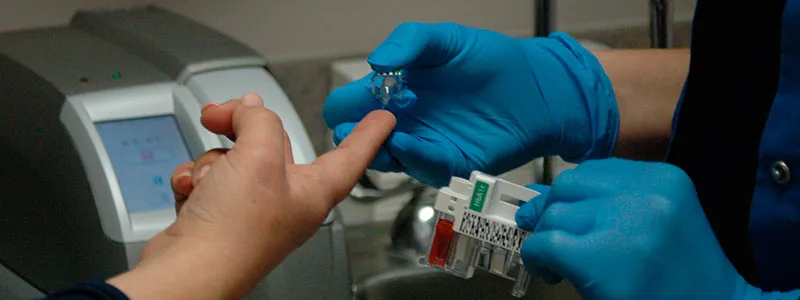One of the most incidence of diseases worldwide is diabetes, which is estimated to affect 383 million people.Mexico is one of the most vulnerable countries, since it is estimated that between 6.6 and 10 million people suffer from it, according to data from the International Diabetes Federation.
In that context, the Doctor of Chemical Sciences, Alejandro Dorazco González, who is part of the Joint Research Center in Sustainable Chemistry of the Autonomous University of the State of Mexico (UAEM) and the National Autonomous University of Mexico (UNAM), works inThe development of light sensors that could optimize the detection of type 2 diabetes mellitus under adverse conditions.
Light sensors disseminate to diagnose type 2 diabetes mellitus Alejandro Dorazco “We design, study and look for applications for new molecules with two basic properties.First they have interesting photophysics, color or are fluorescent;and the second that have the ability to associate with molecules of biological importance, ”he said in an interview with the Conacyt informative agency.
He added that among those molecules are nucleotides, the most complex anions or molecules such as glucosylated hemoglobin, which are chemical indicators of metabolic syndromes such as diabetes mellitus.
“We synthesize, with the support of degree and postgraduate students, the molecules in the laboratory and study their association with these molecules, and in the final stretch we try to give an application that derives in new chemical technologies that allow detecting, capturing and identifyingSelectively the species of biological importance, in this case, type 2 diabetes mellitus ”.
the progress of the project
According to Dr. Dorazco González, so far they have achieved the development of nucleotide sensors, mainly ATP (central molecule in the bioenergetics of biological systems);Also, in the development of sensors for chloride or simple organic anions that have biological importance.
Also, he added, they are in the process of patent for the detection of glucosylated hemoglobin, for iodide, which participates in the metabolism of living beings and already have preliminary results for luminescent chemosenters that detect and capture hemoglobin (type 2 diabetes mellitus).
PROY SCIENCE 16 02 "Those are the preliminary results we have (...) It is about knowledge that in an optimistic field will allow analysis, control, diagnosis of diseases in a very simple and cheaper way compared to those that currently exist."
Another great advantage, he added, lies in the possibility of carrying these new analytical techniques developed in Mexico to places where there are no large teams or large laboratories to diagnose or control certain types of diseases, including type 2 diabetes.
“Likewise, this knowledge will allow us in the future to develop kits easy to use for non -chemical experts (…) that derives in an inclusive knowledge for society because perhaps people who are not experts in chemistry could use these technologies in formEfficient, ”said the researcher.
He also pointed out that it would be very similar to the kits that are imported based on foreign technology to detect blood glucose, for example, as well as those teams that work quickly and reliably, the molecules they make act in a similar way.
How do molecules synthesize?
In relation to the process that is followed to synthesize the molecules, Dr. Dorazco González mentioned that "all molecules are shape and have loads, they are not simply some balls or balls, but that they all have a certain shape and a load.Starting from this, we set a goal around which molecules of biological interest we wantor not include metals and may or may not contain several functional groups. ”
Proy science 16 03ded that it is bachelor's or postgraduate students who synthesize the molecules in the laboratory.“The first step is to make the reactions, then analyze them to define that they are really pure and that they work;The next step is to study your association by photophysic media, for example absorbance of visible UV or fluorescence. ”
He said that these molecules have color or emit light of certain characteristics and when they are placed before the presence of interest molecules, they change their color or their emission of light."That allows us to reliably quantify the amount of the interest analyte or the indicator that interests us and its presence too."
the pending work
When defining the stages of the project, the researcher, who is also a member of the Mexican Academy of Sciences (AMC), explained that the early stages are basic or academic scientific development;That in the second phase the development of chemical technologies is included, mainly those that have application in clinical chemistry, analytical chemistry, in the health sector or even in the industry to detect species of utmost importance in food.
Finally, when referring to what is needed to advance to the stage of technological development, he said that to climb the knowledge they develop in technological applications, collaboration schemes are necessary with experts in other areas, which range from patents, protection of intellectual products, evenexperts in technological developments.


